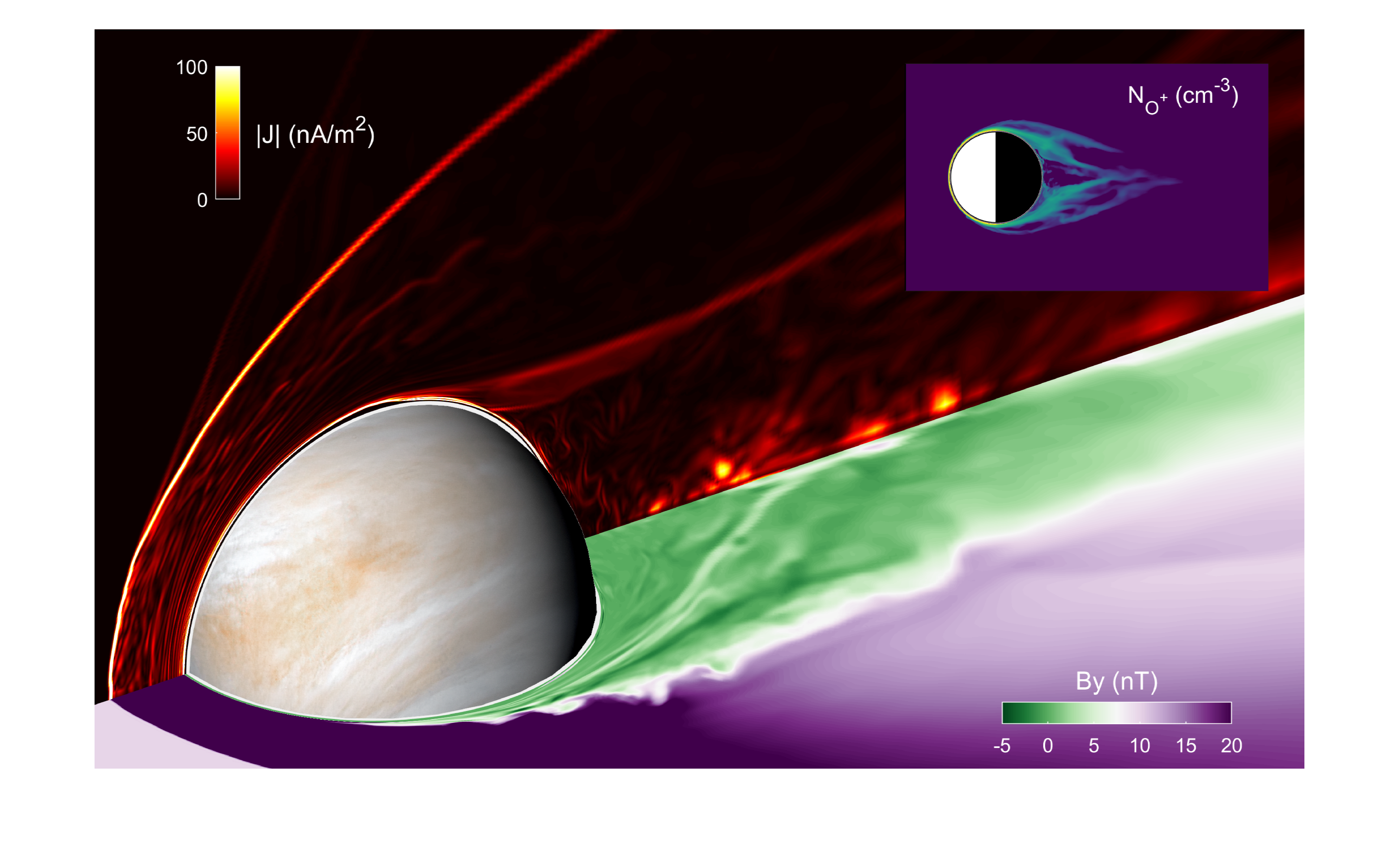Planetary modeling: space environment at Venus and Mars
Overview
We present a new tool to investigate the interaction of the solar wind with Venus with the approach of global multifluid MHD model. The continuity, momentum, energy equation for H+, O+, O2+, and CO2+ are solved self-consistently together with the Faraday’s law. The photochemistry of ionospheric ions are considered as the source term in the density, momentum, and energy equations for each ion. We found that the simulated ionospheric density and temperature and the bow shock location are consistent with previous observations and simulations, for both solar maximum and minimum. The simulated magnetic fields also agree well with the Venus Express observations. Meanwhile, the high resolving power and low numerical diffusion makes model capable of capturing the fine structures of the Venusian induced magnetosphere, such as the Kelvin-Helmholtz instability and the nightside wake. The escape rate have also been estimated and the results are similar to previously estimations. The high-resolution model could be an efficient tool for the exploration of the fine structures of the Venusian space environment system, and also for the application to other unmagnetized planets.

